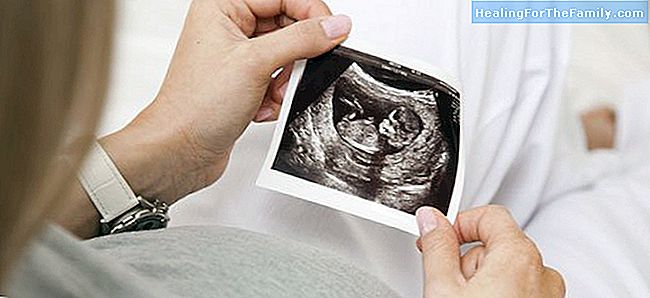Ultrasound in the second trimester of pregnancy
Between weeks 18 and 22 of pregnancy, all pregnant women should have second-trimester ultrasound. It is called morphological ultrasound, and it is usually a long-awaited test for future parents because it offers a lot of information about the health status of the fetus. In addition, this ultrasound
Between weeks 18 and 22 of pregnancy, all pregnant women should have second-trimester ultrasound. It is called morphological ultrasound, and it is usually a long-awaited test for future parents because it offers a lot of information about the health status of the fetus. In addition, this ultrasound reveals the sex of the baby, as long as if his posture during the test allows him to observe it.
How ultrasound is performed at 20 weeks in pregnant women and what it measures

The ultrasound of week 20 of gestation is performed abdominally, and from the health point of view is the most important of all. The ideal time to perform is the one mentioned above, for two reasons:
- The size of the fetus is adequate to assess all organs and their functionality (measures one span), and the amount of fluid is high.
- The Spanish law establishes as limit these weeks of pregnancy for its interruption, in the event that there are malformations.
What is observed in this ultrasound ?:
1. It allows observing measurements of the fetus to rule out delays in growth.
2. Detect morphological or functional abnormalities in the fetus. The main abnormalities that are detected in this ultrasound are the cleft lip, heart problems, spina bifida, kidney problems ....
3. Assess the degree of fetal well-being: by observing the respiratory movements of the fetus, body movements, cord blood flow ...
4. Assess the amount of amniotic fluid.
5. Determine the sex of the baby.
6. Determine the position of the fetus and the placenta.
What parents see on the ultrasound of the 20 weeks
During this ultrasound, parents find it difficult to understand what they see, since the cross sections that obstetricians make to see each organ are difficult to interpret.
However, doctors usually make a 'shot' so that parents have a picture of their future child, in which all parts of the body, the profile of the face are perfectly distinguished ... Although sometimes the fetus is backs and we are not able to see his face: it is important not to get frustrated.
Other ultrasounds that are performed in the second trimester of pregnancy
If you follow the pregnancy by a private clinic, you can surely perform another ultrasound in the second trimester of pregnancy. For example, this is the ideal time to perform 4 4D or emotional ultrasound .The 4D technique allows images to be in real time. It is thought that in this way a new bond is established with the parents and they are extraordinarily beneficial for the family, in addition to the first joint memory, which can be shared very easily. This test, which has no diagnostic purpose or medical purpose, in no case can replace those established by your doctor for the usual monitoring of your pregnancy, determination of fetal anomalies, evolution of the gestational age of the fetus, ...
Factors such as the amount of amniotic fluid, the size of the baby, the space available or its placement, determine that the period between weeks 23 and 29, is, in principle, the ideal to get the best shots of the baby's face. As of week 30, the amount of amniotic fluid is proportionately smaller, compared to the size of the baby who has grown a lot, has therefore less chance of splashing and although his face is very close to the final, it is more difficult to get good images, because it is also often the case that the baby adopts positions in which he shows his back or covers his face with hands and feet.












